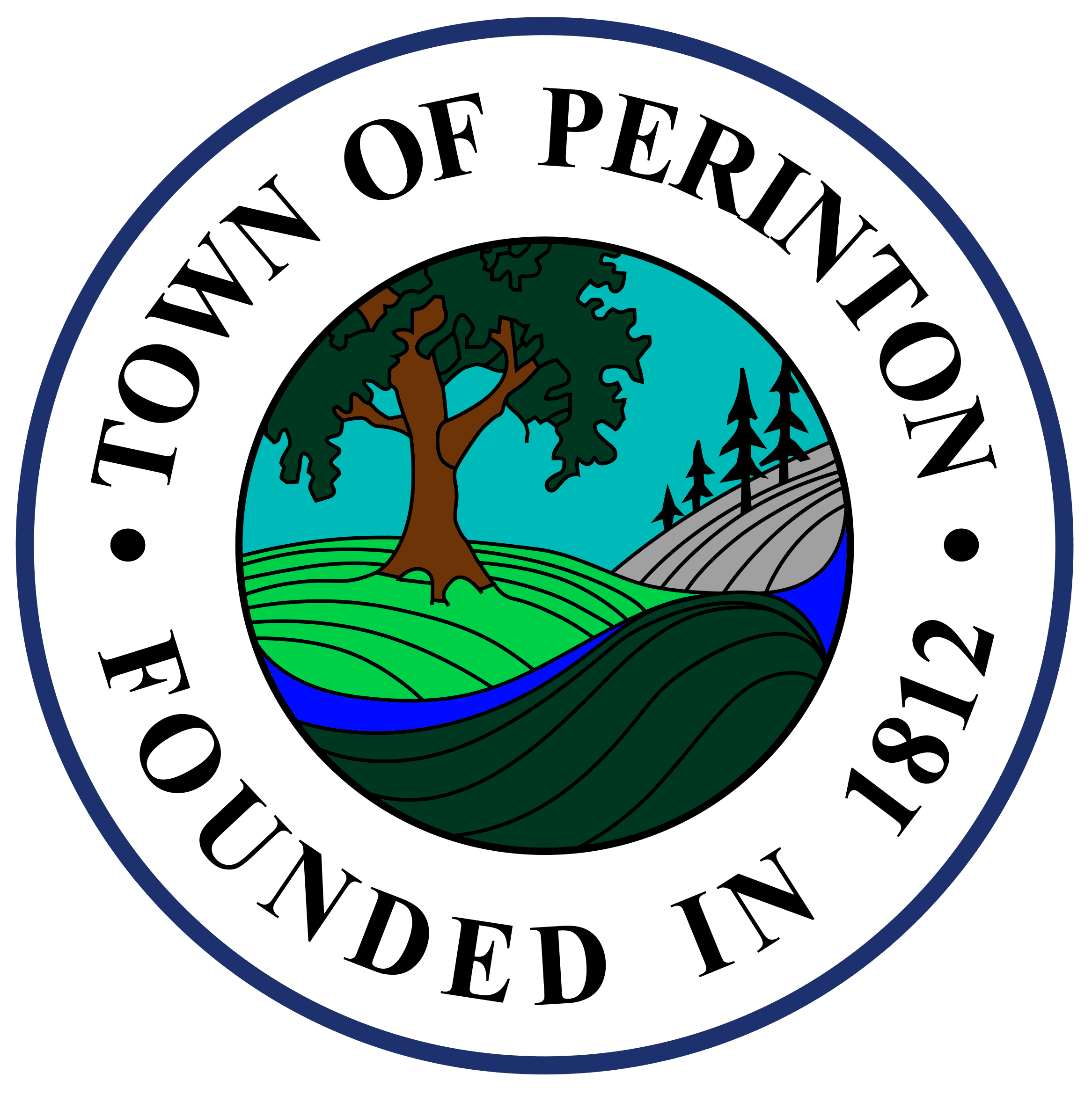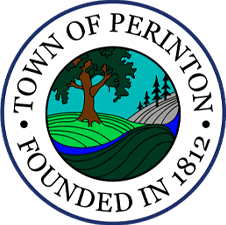A Brief History of Perinton
Oliver Phelps and Nathaniel Gorham purchased 2.6 million acres of land in the wilderness of Western New York in 1788. The area had rich soil and abundant water power, both essential in luring farmers from the rocky hills of New England to the western frontier. William Walker of Canandaigua purchased 36 square miles of the land and hired his brother Caleb and his cousin Glover Perrin to survey the land and divide it into 66 equal lots. The area was known as Township 12, Range 4, in the governmental unit of Northfield.
Glover Perrin, his family, and his six siblings and their families settled in the same area, which became known as Perinton when it was officially established by the New York State Legislature on May 26, 1812. Other settlers soon followed, as word of the area’s good farming traveled back east. Between 1800 and 1814, the Perinton census showed a growth in population from 71 to 821 people.
Because the earliest settlers were farmers, they settled in the flat areas of the town that were easily cleared, specifically in Egypt and Perinton Center (the intersection of Turk Hill and Ayrault Roads). Other settlers located near the area’s streams, where they built mills. Early commercial ventures also included blacksmith shops, taverns, and inns. On April 6, 1813, the first town meeting was held in Cyrus Packard’s tavern in Egypt, a thriving Perinton hamlet on the stagecoach road between Canandaigua and Rochester. Many of the current and future leaders of the town lived and farmed in Egypt. Packard, for example, was Perinton’s first elected supervisor.
By the 1820’s, things were changing, as the Erie Canal opened up western New York. The Village of Fairport, an approximately one square mile area within the Town of Perinton, was drained of its unhealthy swamps by the new canal, and the north-south route through the village served as a natural highway for farmers to bring produce to the canal. The result was a booming canal town which eventually eclipsed the hamlet of Egypt as well as the surrounding canal settlements of Knapp’s Bridge, Fullam’s Basin, and Hartwell’s (Bushnell’s) Basin. Cyrenus Mallett moved from Egypt and built a popular hotel on the canal, one of many that, along with numerous canal stores and barns, lined the new route. Political power also moved to the village as town meetings were held in Fairport starting in 1827. In 1829, the Post Office moved from Fullam’s Basin to the Village of Fairport.
From the 1850’s to the 1950’s, Perinton’s history was primarily Fairport’s history. The village was not only an active canal port, but also developed into a booming industrial town, echoing a trend that was occurring nationwide. As a result of the availability of cheap and easy transportation, which by the 1850’s included the railroad as well as the canal, companies like the DeLand Chemical Company and the Cobb Preserving Company grew and thrived. DeLand Chemical produced saleratus, known today as baking soda, which it marketed nation-wide. It was eventually succeeded by the Fairport Vinegar Works, which developed pectin, sold as Certo, used in the jelling process. Cobb Preserving, the forerunner of the American Can Company, was one of the first companies to perfect the use of the open-top sanitary can, thereby greatly increasing the safe use of factory-canned goods. The Trescott Company developed fruit grading and packing systems that revolutionized the wholesale grocery business. Taylor’s Oil of Life and Crystal Rock Mineral Water, catering to the late nineteenth century demand for cure-all “patent medicines,” were both produced in Perinton and shipped across the country.
Schools, churches, and cemeteries were organized to serve the growing community. Services, including a fire department, a public library, street lighting, and parks, enhanced the life of the town and village. The philanthropy of the early industrialists like the DeLands, Taylors, and Potters contributed to many of those services. In addition, residential areas, with homes built in a variety of architectural styles, were built around the thriving village center.
The town, outside the Village of Fairport, remained essentially rural until the 1950’s. Maps of the late nineteenth and early twentieth centuries show many family farms with names like Sunnycrest Farm and White Brook Farm. It was not until the suburban boom of the 1950’s and 60’s that the farms began to gradually disappear. Today, although farms still exist in Perinton, that former farmland supports not only suburban subdivisions, but also office and industrial parks, and an impressive number of parks and open spaces. An Historic Preservation Ordinance, passed by the Town of Perinton in 1987, exists to protect the town’s historic areas and buildings. The Village of Fairport has also changed significantly over the last 100 years. In the late 1960’s and early 1970’s the old canal town buildings were torn down and replaced with the new Village Landing and Packett’s Landing complexes. The new buildings do, however, maintain the ambiance of a canal village, and allow Fairport to capitalize on the recreational aspects of the canal that have superseded its commercial use. The community looks to the future with the goals of maintaining reasonable growth and preserving both its rural and canal town heritage.


